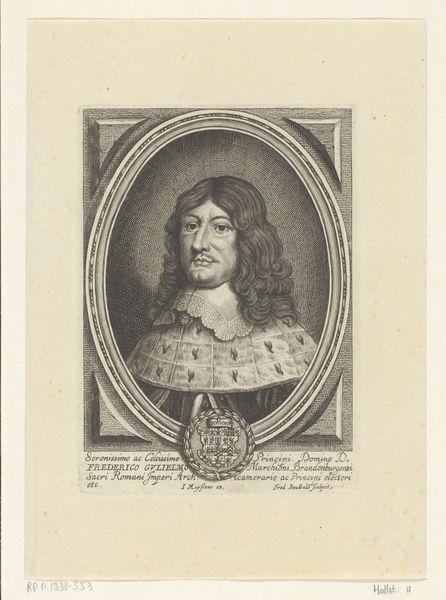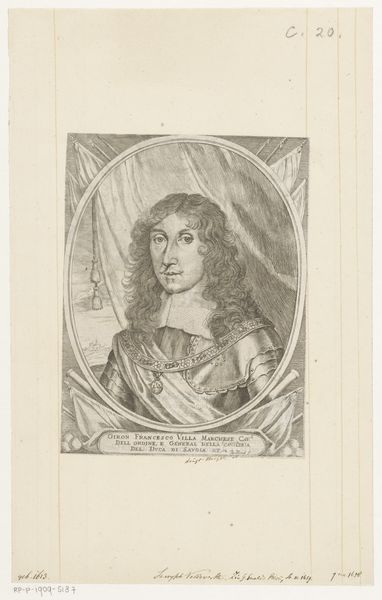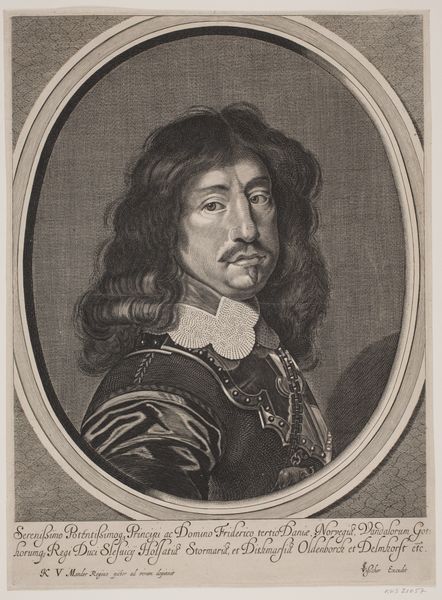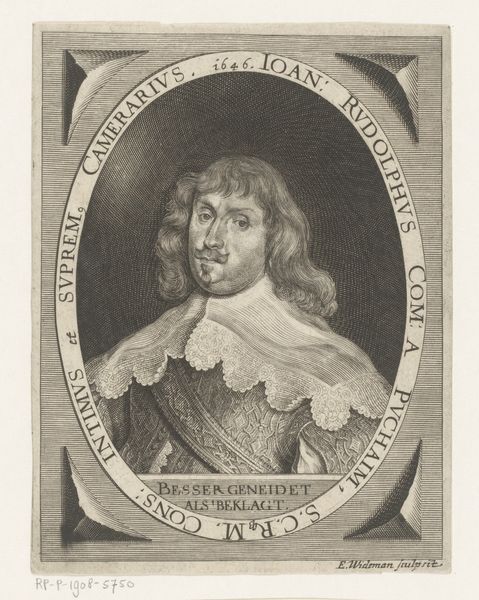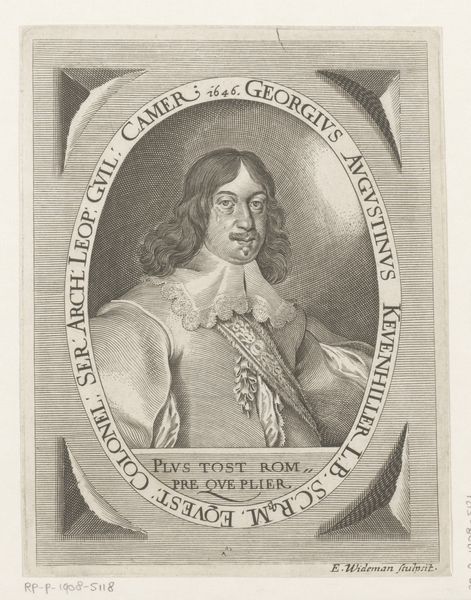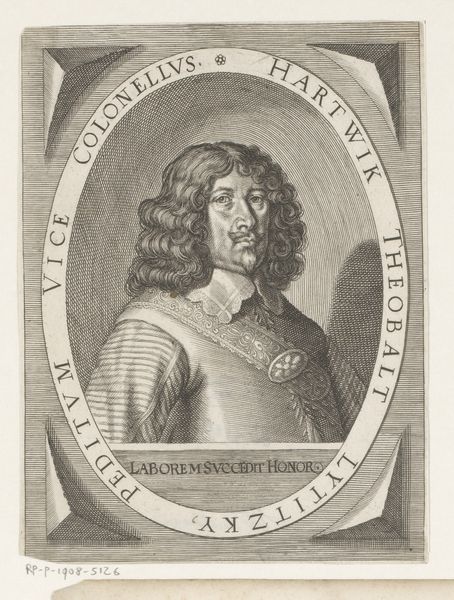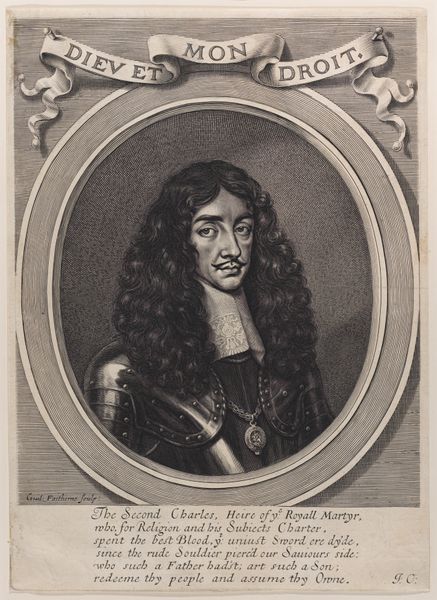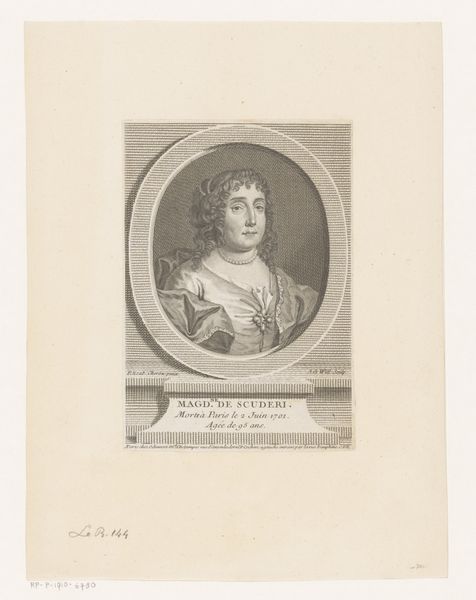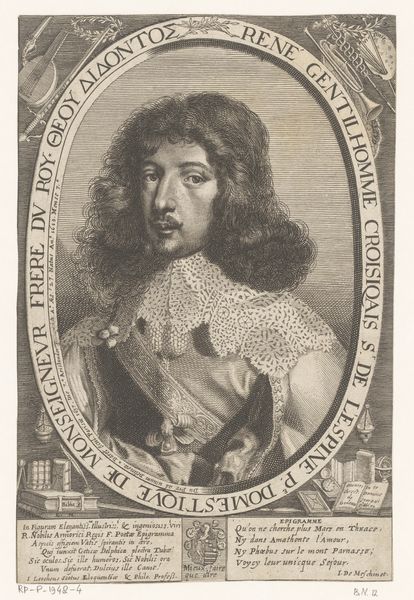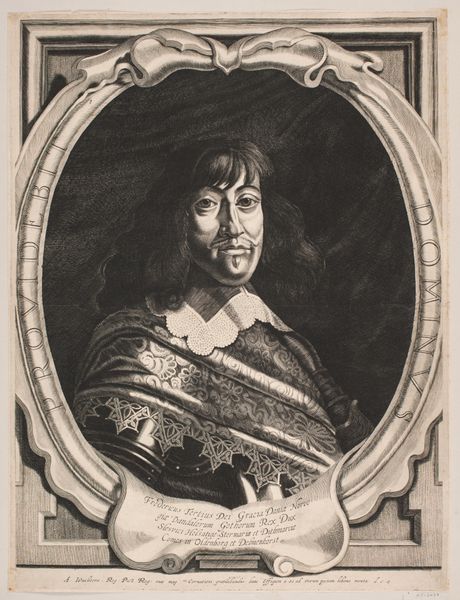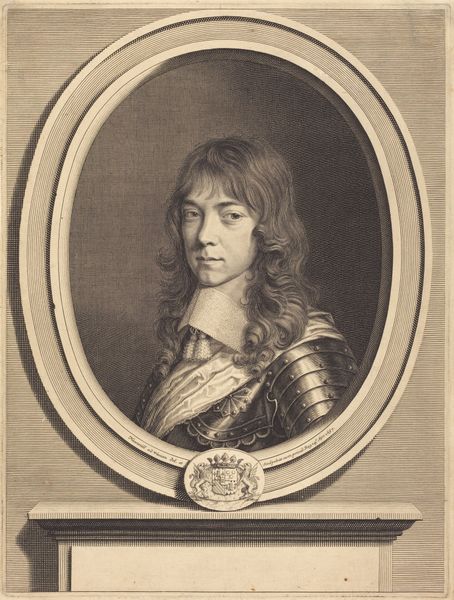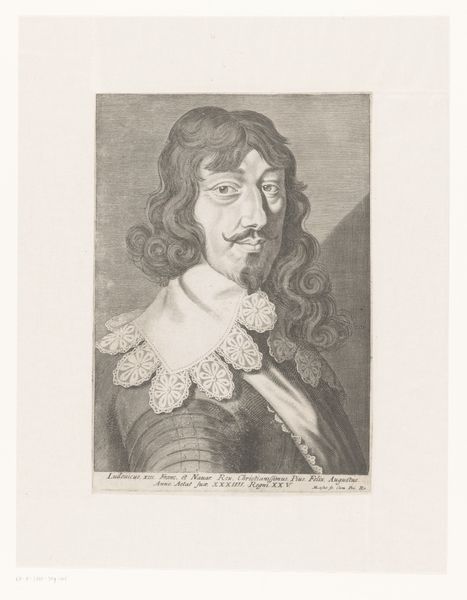
print, engraving
#
portrait
#
baroque
# print
#
history-painting
#
engraving
Dimensions: height 417 mm, width 306 mm
Copyright: Rijks Museum: Open Domain
Curator: This is a print from 1649 by Cornelis Visscher, titled "Portret van Frederik Willem, keurvorst van Brandenburg," here at the Rijksmuseum. Editor: Wow, my first thought is it's austere but something about the rendering is, like, a tiny bit wonky, you know? But dignified, of course, the way it's designed in an oval frame and all. It seems both meticulous and slightly unnerving. Curator: The unsettling feeling could come from the sharp detail achievable through engraving and the portrait's rigorous symmetry. Note the framing, the composition directing us to analyze the face. We see an almost clinical representation of power, frozen in time. Editor: Right, it's the contrast between the sharp detail of his face versus the softness of the fur. The expression reads… intense? And what is it about these old portraits where you can tell a lot about the subject’s station, right, but nothing about who they actually are. It looks as though every line is carved in metal, quite literally here. You'd need the man in the oval in front of you to judge. Curator: A relevant observation, if you note that Baroque portraiture serves not only to represent but to idealize. The subject's personality is subordinate to his function, which also justifies that very stiff composition, its clarity, that gaze conveying the ruler's authority. Visscher emphasizes Willem’s power and his belonging to an historical lineage. Editor: It also reminds you how people in old portraits have this habit of gazing at the viewer in ways that modern portraits mostly avoid. Breaking the fourth wall, almost literally, connecting you back in time, if that makes sense. I feel like old portraits make you an active participant—are you thinking that? Curator: This approach facilitates an interaction, it also projects, if one may say so, an assertion of power across temporal divides. As viewers, we must contend with the unyielding gaze and confront the persona carefully curated by Visscher's technical precision. The portrait is an effective exercise in historical narrative and the visual rhetoric of power. Editor: And a reminder that a portrait, no matter how precise or seemingly "real," is always a constructed representation of power and position. Anyway, makes you think doesn't it. Curator: Absolutely. Cornelis Visscher gifts us with much to think about regarding power and the portrait in his "Portret van Frederik Willem".
Comments
No comments
Be the first to comment and join the conversation on the ultimate creative platform.
